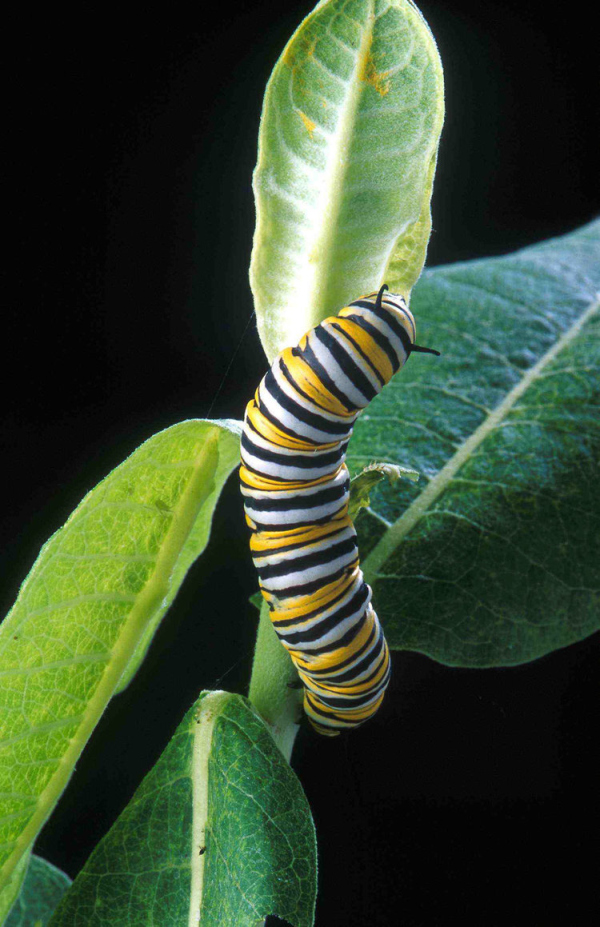The Buzz on Bees and Butterflies
April 10, 2018
By Iowa Soybean Association Staff
Sometimes, little things can make a big impact. This spring, gardeners and farmers alike are encouraged to plant areas of pollinator habitat across Iowa to help the survival of the beautiful monarch butterfly and the rusty patched bumble bee.
Pollinator habitats consist of a variety of host plants such as milkweed, and food source flowers like bee balm, grown for insects, birds and mammals. Whether you have a container on your front porch or several acres of land, you can be a part of the statewide initiative to plant pollinator habitats this spring.
Champions for Monarchs
The eastern monarch butterfly population has decreased by 80 percent during the past two decades. This decline is largely caused by the eradication of milkweed from acreages and roadside ditches. Milkweed is the only food source of the monarch caterpillar and the only plant where the butterfly lays eggs.
Iowa State University created the Iowa Monarch Conservation Consortium in 2015 to restore habitat to help increase butterfly population. The consortium consists of dozens of organizations, including agriculture groups such as the Iowa Soybean Association (ISA), Iowa Corn Growers Association and Iowa Turkey Federation. It encourages farmers, gardeners, community organizations and businesses to plant and preserve milkweeds for monarchs. You can learn more about the Iowa Monarch Consortium at monarch.ent.iastate.edu.
 Although the monarch caterpillar needs milkweed to survive, monarch butterflies rely on many different plants for food sources. It is important to have a variety of host plants, which are plants that serve as a home to specific insects. For example, the milkweed hosts the monarch and the aster hosts the painted lady and slivery checkerspot butterflies. Nectar plants are needed too, such as coneflower, for food sources.
Although the monarch caterpillar needs milkweed to survive, monarch butterflies rely on many different plants for food sources. It is important to have a variety of host plants, which are plants that serve as a home to specific insects. For example, the milkweed hosts the monarch and the aster hosts the painted lady and slivery checkerspot butterflies. Nectar plants are needed too, such as coneflower, for food sources.
Wayne Fredericks, a soybean farmer from Osage, converted nearly seven acres to pollinator plots in several fields. These areas weren’t conducive to row crop farming because of soil conditions or difficulty with maneuvering equipment.
“I usually show these areas to visitors first,” says Fredericks. “The flowering plants are beautiful. I’m proud of the habitat we created for the monarch and other pollinators.”
The Buzz on Bees
Numbers of rusty patched bumble bees have dropped 87 percent since the late 1990s. At one time, these bees were found in 28 states and two Canadian provinces, as far east as Maine and as far south as northern Georgia. Since 2000, rusty patched bumble bees have been found only in 13 states, including Iowa and one Canadian province.
According to the USFWS, bumble bees are more effective pollinators than honey bees, for some crops, because of their ability to “buzz pollinate,” where can they dislodge firmly-held flower pollen with their flight muscles. The USFWS estimates that the economic value of pollinator services, mostly bees, at $3 billion annually.
For survival, the rusty patched bumble bee needs nectar- and pollen-type flowers, nesting sites — such as underground or abandoned rodent cavities — and overwintering sites of undisturbed soil for the queens. This bee species is on the USFWS endangered list due to reduced habitat areas, intensive farming practices, disease and increased pesticide use.
ISA is partnering with Syngenta on an endangered species pilot project in eastern Iowa, which includes creating habitat for the rusty patched bumble bee. Together, they are working with farmers to add bee-friendly plants to conservation reserve acres, edge-of-field areas, waterways and buffer strips.
Plant Habitat this Spring
Pollinator habitat, large or small, has numerous benefits. In addition to creating homes and food sources for dwindling monarch and bee populations, they serve as havens for beneficial insects. The perennial plants slow the flow of water runoff and reduce soil erosion. There also is the intrinsic beauty of flowers and butterflies.
Blank Park Zoo in Des Moines began a statewide campaign a few years ago to get pollinator plants growing. The “Plant.Grow.Fly.” program encourages the establishment of pollinator gardens wherever possible.
The website has an interactive map of registered garden locations across the state, including retirement centers, college campuses, private backyards and community parks, to name a few. The website also contains descriptions of host and nectar plants, ideas for garden design and gardening tips. Iowans who plant pollinator-friendly plants their gardens or landscapes can register their gardens on the zoo’s website at www.blankparkzoo.com/conservation/plantgrowfly.
With conscious effort and a community approach that involves agricultural, urban and public lands, milkweeds and other pollinator plants can be increased to keep the monarch and rusty patched bumble bee fluttering in our landscapes.